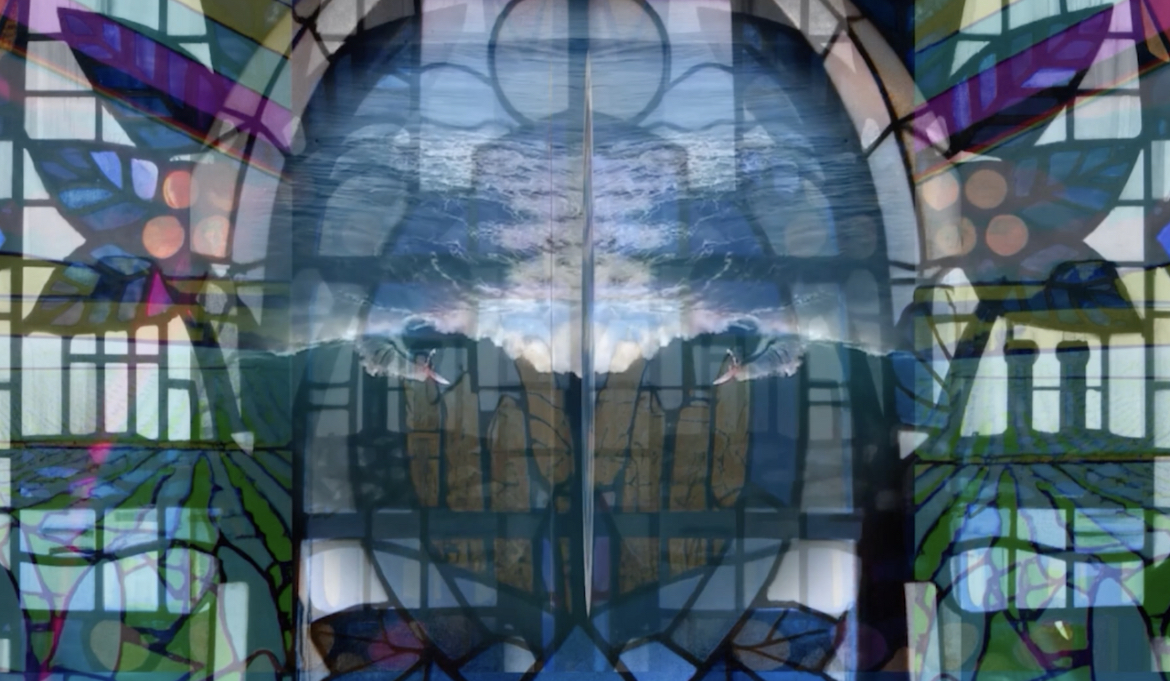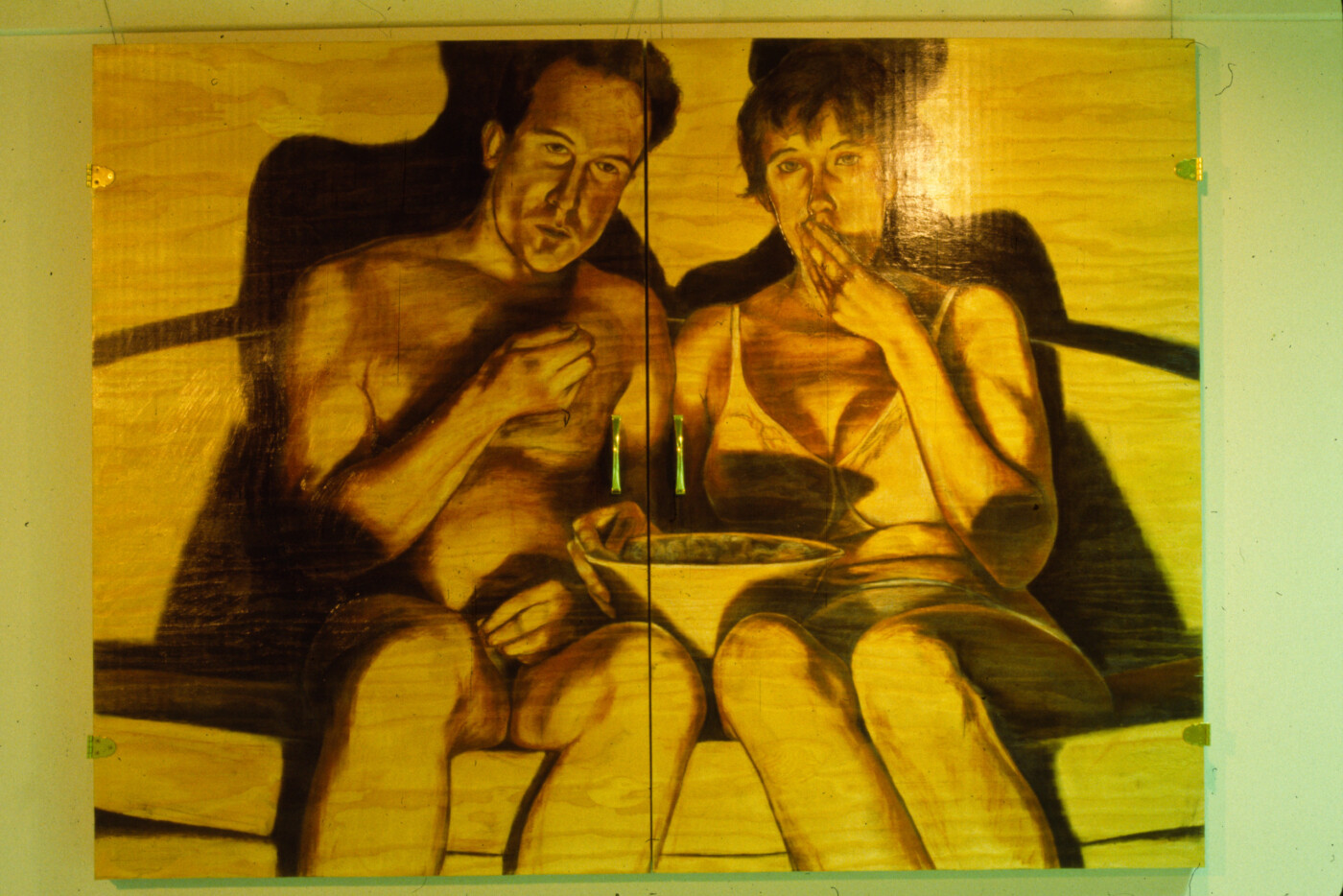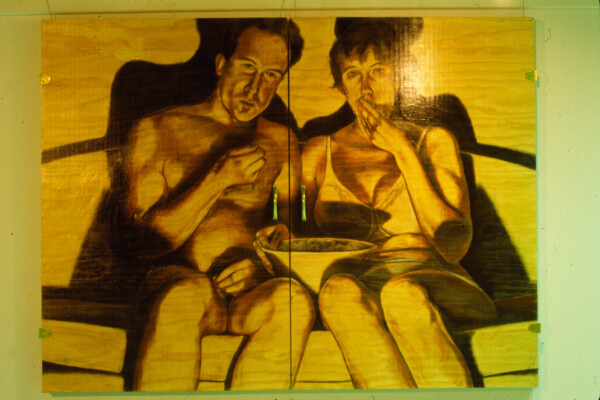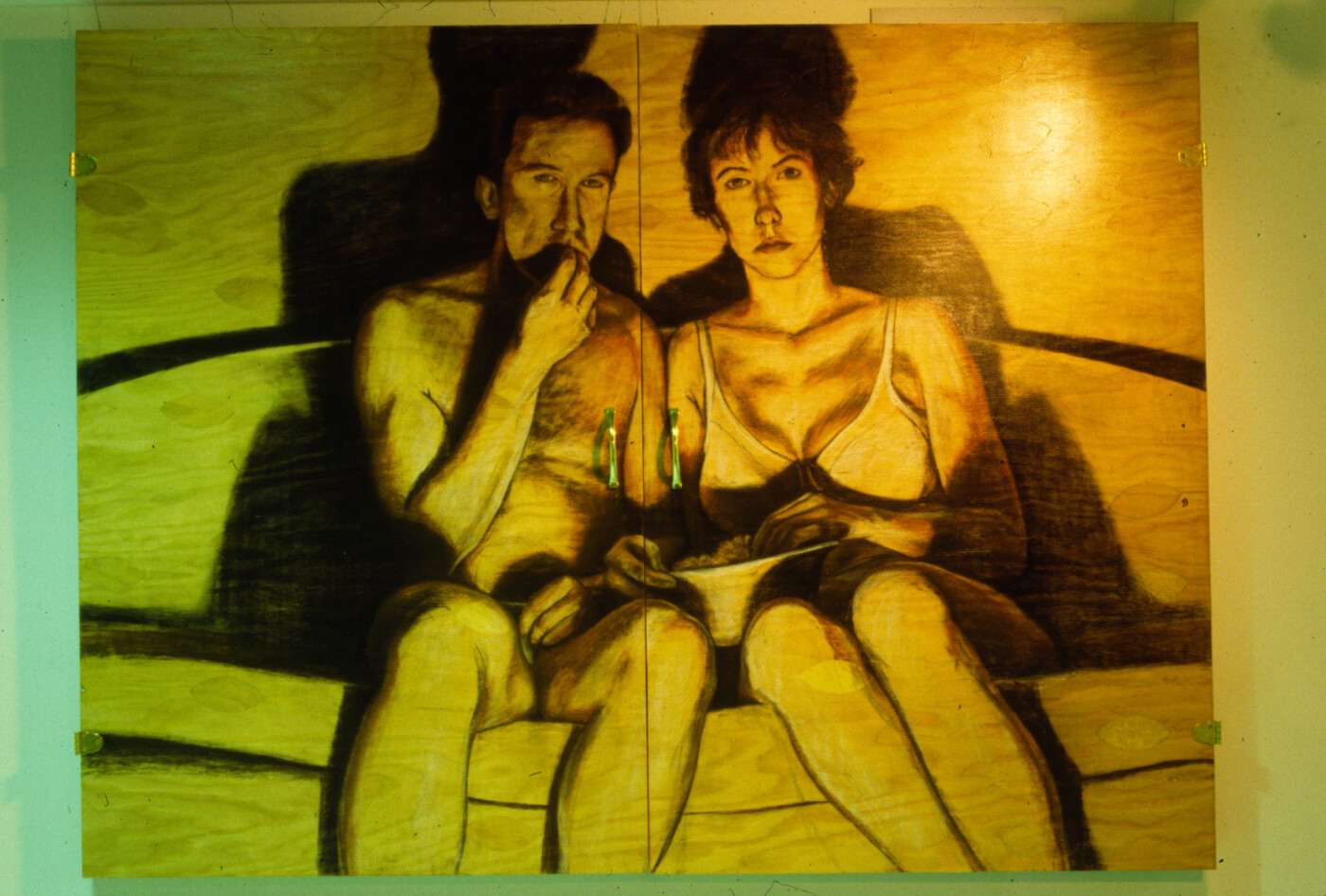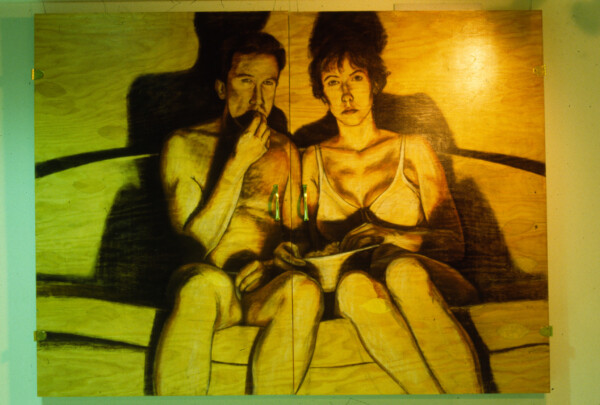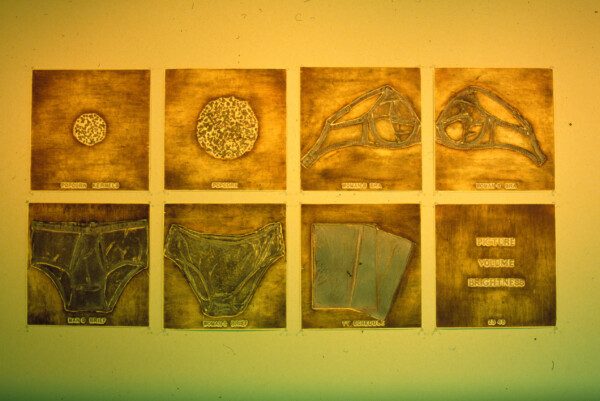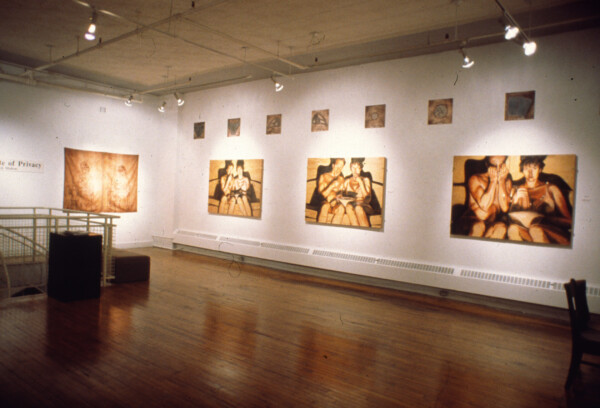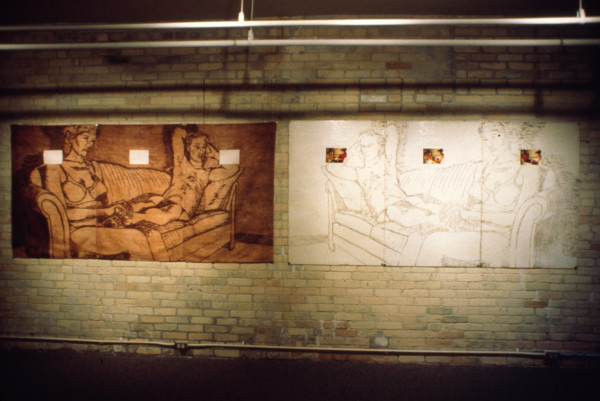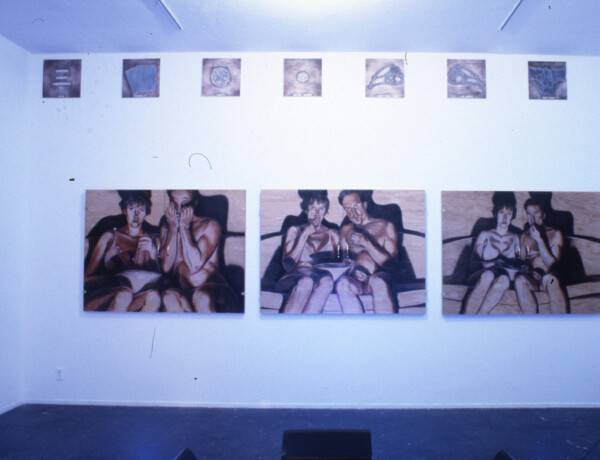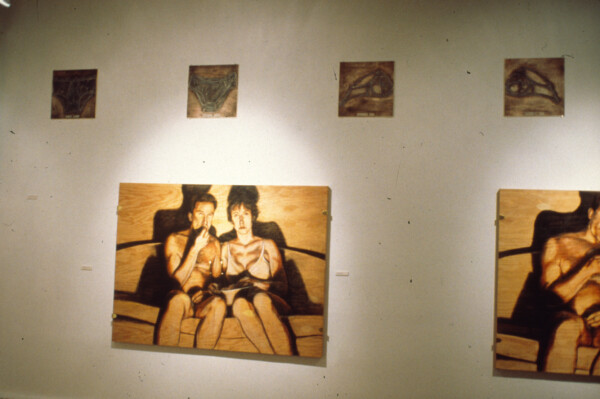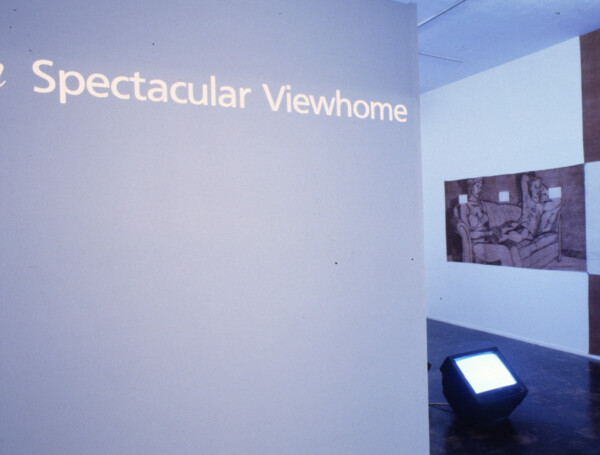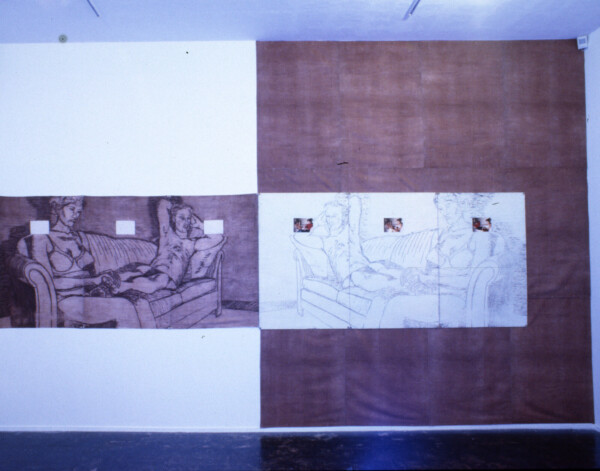Patrick Mahon’s video and drawing installation, Spectacular Viewhome, deals with notions of voyeurism and exhibitionism within the domestic space of the home.
The artist also collaborated with Clare Gomez Edington to produce two video interviews which examined issues around the practice of artists who use their partners as subjects for their work.
In the book Patrick Mahon, Clare Gomez Edington. Publication no Longer Available.
Spectacular Viewhome
The intersecting of the notion of the ‘spectacle’ and ‘the home’ may call to mind what a precious commodity the view of nature, or the city, from the private space of the home has become. At one time, the walls of the parlour were adorned with pictures of exotic locales, images of distant wars, and latterly, works of art intended to transport the viewer aesthetically. Now, the contemporary – affluent – parlour-dweller desires a picture that is also at a distance: a view through his window that makes the world appear more precious, cleaner, and untouchable.
Television is certainly the other ‘window on the world;’ the sometime vulgar, sometimes transporting one that is available to all- especially those not possessing of more priceless views. It too invests the private space with a sense of spectacle, making the extraordinary seem commonplace, and putting the ordinary at a distance. Indeed, it can act as ‘other’. Within the home, becoming the object around which and through which relationships are negotiated.
This exhibition is composed of some of the later works in my project of representing home viewing, using images of my partner and myself engaged as spectators. The emphasis here is on the materiality of the domestic scene, and on the metaphoric personal effects of the viewers. Their costumes of underwear – ‘private skins’ – are implemented to help define the space of the room that inscribes them. As real spectators they are indeed absent, and so is the world within the television monitors, then, steps into the middle of two absences.
This work arises out of concern with wanting to understand the contemporary natures of the private and the public. Sociologist Hanna Arendt viewed the breakdown of the so-called dichotomy between the two s a problem. While I would challenge her notion that property itself is the sole determinant of the private realm, her eloquent expression of what is at stake if privacy is allowed to disappear bears repeating in the context of Spectacular Home.
“The four walls of one’s private property offer the only reliable hiding place from the common public world, not only from everything that goes on it in it but also from its very publicity , from being seen and being heard. A life spent entirely in public in the presence of others, becomes, as we would say, shallow. While it retains its visibility, it loses the quality of rising into sight from some darker ground which must remain hidden if it is not to lose its depth in a very real, no-subjective sense”1
(1) Hanna Arendt, The Human Condition, Chicago: University of Chicago Press, 1985), pp. 70-71
